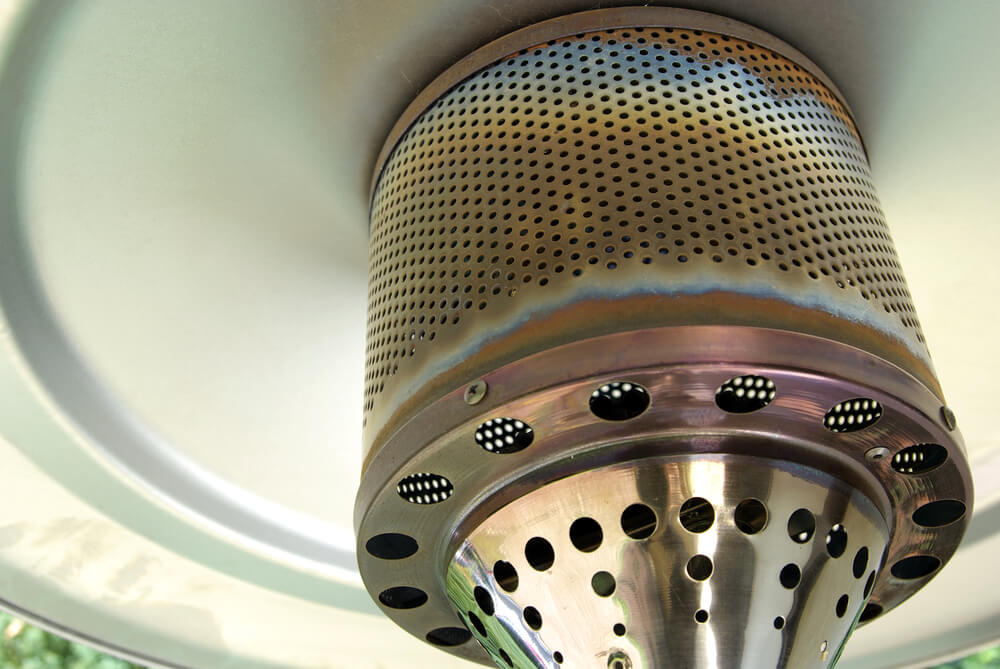What is a patio heater?
A patio heater is a device that is specially designed to provide warmth to outdoor spaces, particularly patios. They are perfect for socializing outdoor during cold seasons or chilly evenings, allowing you to enjoy the outdoors without feeling the cold.
A patio heater typically has a portable and freestanding design, making it easy to move around and position wherever you need it. They come in different types, such as gas patio heaters, propane patio heaters, and electric patio heaters. Gas patio heaters use natural gas or propane to create heat while propane heaters use propane tanks. Electric patio heaters, on the other hand, use electricity to generate heat.
Outdoor patio heaters have become popular over the years for various events, from family gatherings to cafes and restaurants. They come in different sizes and styles, making it easy to choose one that fits your outdoor space’s aesthetic. While most people use patio heaters during the winter, they can also be used on cooler summer nights or just for the ambiance they create.
Understanding how patio heaters work is important before investing in one. They are designed with many safety features to avoid accidents caused by fire, gas leaks, or overheating. They have safety components such as gas controls, safety devices, and safety features that minimize the risk of accidents from use.
Some common issues with patio heaters include problems with gas flow, loose connections, or a dirty thermocouple, which can cause the heater to malfunction. Regular maintenance and cleaning of the patio heater can help solve most of these issues, ensuring that your patio heater continues to work correctly for years to come. Overall, a patio heater is an excellent investment for anyone who wants to enjoy their outdoor space without the discomfort of the cold.
What is the purpose of a patio heater?
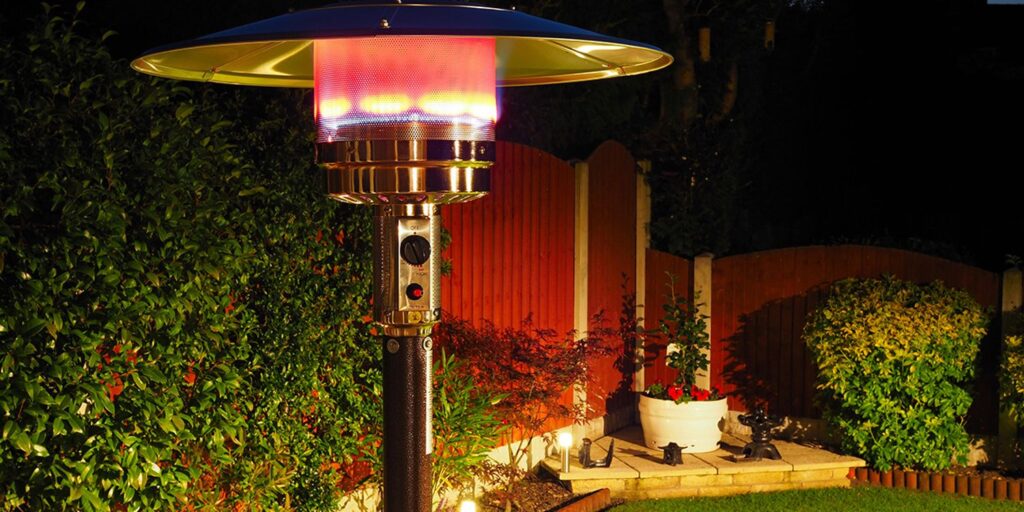
A patio heater is a device used to provide warmth to outdoor spaces. They come in various types, including electric, natural gas, and propane heaters. The main purpose of a patio heater is to extend the use of an outdoor space when the weather is too chilly to enjoy without additional heat.
Patio heaters are commonly used in restaurants, bars, hotels, and residential areas, providing warmth for customers and guests as they enjoy their meals or drinks outside. They are also popular for outdoor events, such as weddings and parties, allowing the festivities to continue comfortably even in cooler temperatures.
In addition to providing warmth, patio heaters create a cozy ambiance. The soft glow of the flames adds to the outdoor atmosphere and creates a relaxing setting for the people using the space. Patio heaters can be styled to match any outdoor decor or theme, making them a versatile addition to any outdoor space.
Overall, the purpose of a patio heater is to enable the enjoyment of outdoor spaces year-round, no matter the weather. With the right type of patio heater for your space and needs, you can create a comfortable and inviting atmosphere for yourself, your guests, or your customers.
Common Issues with Patio Heaters
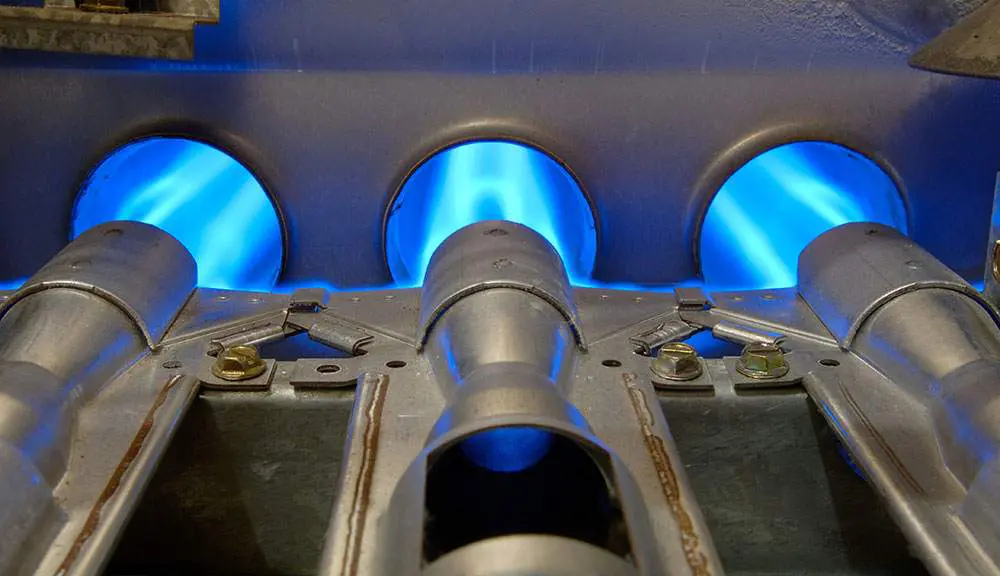
Patio heaters are an essential part of outdoor living spaces, providing warmth and comfort on cool evenings or during chilly seasons. However, these heaters can sometimes experience problems that prevent them from working properly or ignite. Here are some common issues with patio heaters and what you can do about them.
1. Ignition Problems: Ignition problems can be caused by a variety of issues, including dirty thermocouples, faulty spark igniters, or universal igniters that do not properly connect to the heater’s gas line. To address these issues, you can try cleaning the thermocouple with a pipe cleaner, adjusting the spark igniter, or replacing the universal igniter with a model that fits the specific make and model of your heater.
2. Gas Leaks: Gas leaks are a serious safety risk and can be caused by a loose gas valve or a damaged gas line. If you suspect a gas leak, turn off the gas cylinder immediately and seek the assistance of a professional technician.
3. Low Gas Pressure: Low gas pressure can prevent the heater from igniting or cause it to malfunction. Check the gas cylinder and regulator to ensure that it is properly connected and that the gas flow is adequate.
4. Dirty Emitter Screen: The emitter screen on a patio heater can become clogged with debris over time, which can block the flow of gas and cause the heater to malfunction. To resolve this issue, remove the emitter screen and clean it with a soft brush or compressed air.
5. Weather Damage: Heavy rains, extreme temperatures, and strong winds can damage the electrical connections, frayed wires, and heating element of the patio heater, leading to malfunctions or ignition problems. Regularly inspect your patio heater and make necessary repairs to ensure that it is operational.
By understanding these common issues and taking proactive steps to maintain your patio heater, you can enjoy warmth and comfort in your outdoor living spaces for many years to come. However, if you are unsure about how to diagnose or repair a problem with your patio heater, it is always best to consult a professional technician for assistance.
Control Knob Problems

Control knob problems can be a common issue with outdoor patio heaters. The control knob is an essential component that regulates the flow of gas, and if it is not functioning correctly, it can result in the heater not igniting or malfunctioning.
One of the most common control knob problems is a loose connection. If the control knob is not securely attached to the gas valve, it can result in a weak or non-existent gas flow. To fix this issue, check to ensure that the control knob is fitted snugly onto the gas valve and that there are no obstructions or debris in the gas line.
Another control knob problem that can arise is a damaged gas valve or regulator. Over time, wear and tear can cause these components to fail or become damaged, which can result in a decrease in gas flow or irregular gas flow.
Additionally, if the control knob is not turning properly or is stiff to move, it can indicate that there is a problem with the gas valve or control mechanism. This can be a safety hazard and should be addressed immediately by a professional technician.
Another issue that can arise with the control knob is related to the type of heater. Different types of patio heaters may have different control knob configurations, so it is essential to consult the owner’s manual to ensure that the control knob is being operated correctly.
In conclusion, control knob problems can cause a patio heater not to ignite or malfunction. It is vital to regularly inspect the control knob for any loose connections, damage to the gas valve or regulator, or stiffness in movement. If there are any issues with the control knob, it is crucial to seek out the assistance of a professional technician to ensure proper repair and safety.
Gas Cylinder Problems
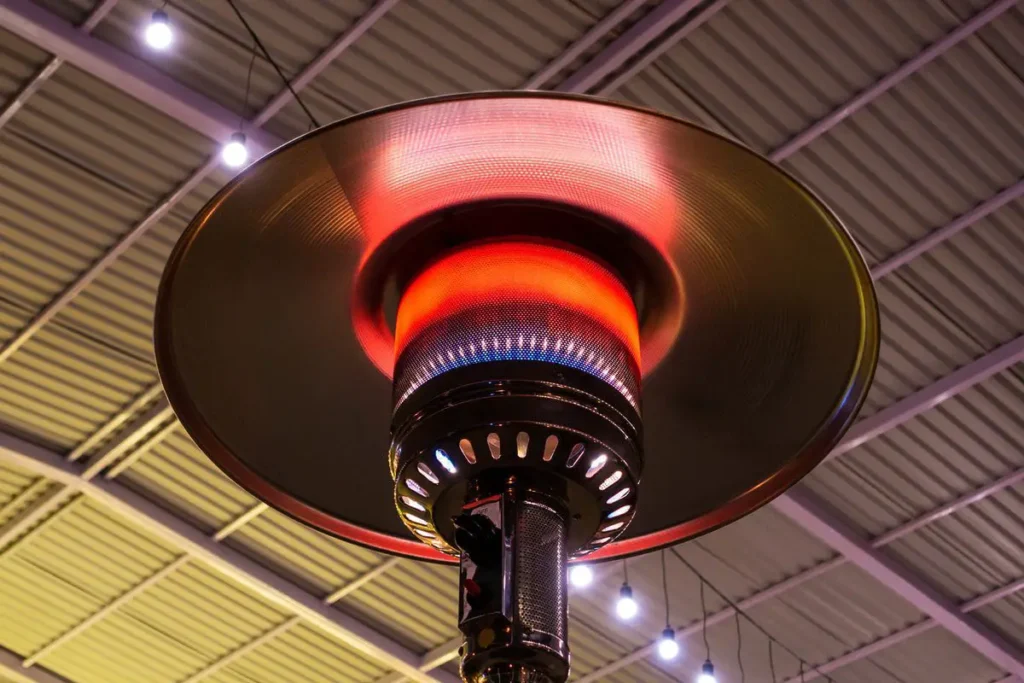
Gas cylinder problems can be a common issue for patio heaters. These devices are typically designed to operate using propane, which requires a gas cylinder to function. If your patio heater is not igniting, one of the first things to check is your gas cylinder.
One potential problem with gas cylinders is that they can become damaged or deteriorated over time. If your cylinder is showing signs of wear and tear, such as rust, dents, or cracks, it may need to be replaced. It is important to never use a damaged cylinder, as it can be dangerous and lead to gas leaks.
Another potential problem with gas cylinders is that they can become empty. It can be frustrating to try to ignite your patio heater, only to realize that your cylinder is out of fuel. To prevent this issue, it is important to monitor your propane levels and keep a spare cylinder on hand.
Gas cylinder problems can also be related to faulty cylinder valves or regulators. If these components are not working correctly, it can result in a decrease in gas flow or irregular gas flow, which can prevent your patio heater from igniting. If you suspect that your cylinder valve or regulator is malfunctioning, it is important to have it inspected and repaired by a professional technician.
To prevent gas cylinder problems, it is essential to maintain your cylinders properly. This includes storing them in a cool, dry place, away from direct sunlight or sources of heat. It is also important to inspect your cylinders regularly for signs of damage or wear and tear.
In summary, gas cylinder problems can be a common issue with patio heaters. To prevent these issues, it is important to maintain your cylinders properly, monitor your propane levels, and inspect your cylinders regularly. If you suspect that your gas cylinder is damaged or malfunctioning, it is important to have it inspected and repaired by a professional technician.
Pilot Light and Tube Issues
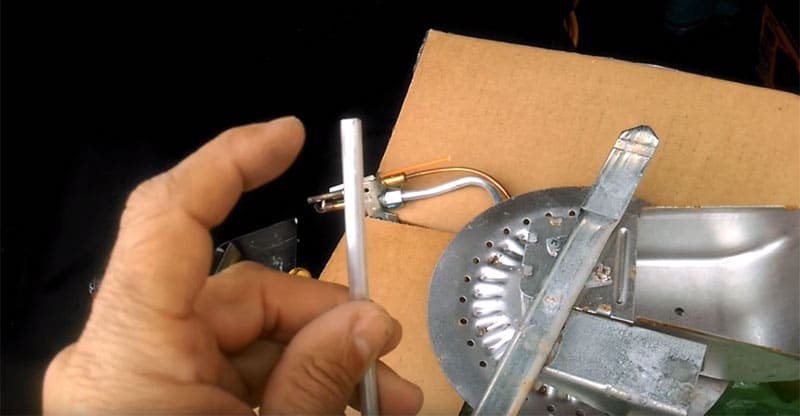
One of the most common issues with outdoor patio heaters not igniting is related to the pilot light and tube. The pilot light is a small flame that is continuously burning, and it is responsible for igniting the gas that feeds the burner assembly. If the pilot light is not functioning properly, then the gas flow to the burner will be disrupted, causing the heater to malfunction.
One potential cause of pilot light issues is a dirty or clogged pilot tube. The pilot tube is a small metal tube that carries gas from the gas control valve to the pilot light. If the tube becomes clogged with dirt, dust, or other debris, it can prevent gas from reaching the pilot light. This can result in a weak or non-existent pilot flame, which will prevent the heater from igniting.
Another common issue with pilot lights is related to carbon build-up and deposits. Over time, carbon can accumulate on the burner assembly, including the pilot tube and apertures. This can restrict the flow of gas and can cause the pilot flame to become weak or erratic. To prevent this issue, it is important to keep the burner assembly clean and to inspect it regularly for signs of carbon build-up.
In some cases, pilot light issues can also be caused by a faulty ignition assembly. The ignition assembly is responsible for creating the spark that ignites the gas. If the ignition assembly is not working properly, it can prevent the pilot light from igniting. This can be caused by issues such as frayed wires, dirty or worn spark igniters, or problems with the universal igniter.
To prevent pilot light and tube issues, it is essential to maintain your patio heater properly. This includes inspecting the burner assembly and pilot tube regularly for signs of wear and tear or carbon build-up. It is also important to keep the area around your patio heater clean and free of dirt, dust, and debris that could clog the pilot tube or apertures. By taking these steps, you can ensure that your patio heater remains in good working order and can provide reliable heat when you need it.
Gas Leaks
One of the most serious issues that could occur with a patio heater is a gas leak. This is a potentially dangerous situation that requires immediate attention. Gas leaks occur when there is a break or damage in the gas pipe or gas hose, which allows gas to escape into the surrounding area. This is usually indicated by a strong odor of gas.
Gas leaks are a serious safety concern, and should not be taken lightly. Inhaling gas can cause dizziness, nausea, and even asphyxiation. Gas leaks can also lead to fires and explosions, which can result in property damage and physical harm.
It is important to immediately turn off the gas supply and ventilation around the patio heater. Once the gas supply has been turned off, it is important to examine the hose and connections for any damage or signs of wear and tear. If there is any visible damage, it is recommended that you replace the damaged component.
If you detect a gas leak, it is essential to call your local gas provider or a professional repair service to come and check for any possible leaks. They have the tools and expertise to detect and correct any leaks in a safe and efficient manner.
It is important to remember to follow the manufacturer’s instructions and safety guidelines when using a patio heater. This includes performing regular maintenance and inspections of all components, checking gas pressure and flow, and ensuring that there are no obstructions in the burner assembly or emitter screen.
In conclusion, a gas leak is a serious issue that should be dealt with immediately. All patio heater users should always be vigilant and aware of the signs of gas leaks, including a strong odor of gas, and take appropriate actions should a leak occur. Regular maintenance and proper care can prevent many issues from arising and ensure that your patio heater operates safely and efficiently for years to come.
Loose Connections
Loose connections are among the common causes of patio heaters malfunctioning. When connections are loose, gas leaks can occur, which is a serious safety issue. Loose connections can interrupt gas flow, which in turn can prevent the pilot light from igniting or cause the heater to turn off randomly.
To avoid these issues, it is essential to check the connections regularly and ensure they are tight. You should also inspect hoses and valves for damage and wear and tear and replace them as needed.
Typically, the control knob of your patio heater may be easy to use, but sometimes, the issue may be caused by the propane tank’s valve. It is not advisable to attempt to tighten a valve if you suspect that it is loose. This should be left to professionals who have the right equipment and expertise to fix the problem.
Additionally, it is a good idea to examine the burner assembly and check for any clogs or debris that may have accumulated. A clogged burner assembly can lead to weak flames or a fire that is too intense. Cleaning the burner assembly is an easy task and often requires a pipe cleaner or a brush to dislodge and clear the debris. However, it is best to refer to your owner’s manual or consult a professional if you are unsure how to clean the assembly.
In conclusion, if your patio heater is not igniting, it is best to first check for loose connections. While it may seem like a minor issue, it can cause significant safety problems if left unaddressed. Regular maintenance, including tightening connections, checking valves, and cleaning the burner assembly, can help ensure that your patio heater operates safely and correctly. Additionally, if you suspect any issues with your patio heater’s gas flow or pressure, it is best to contact a professional repair service to prevent any safety hazard.
Troubleshooting Your Patio Heater Not Igniting
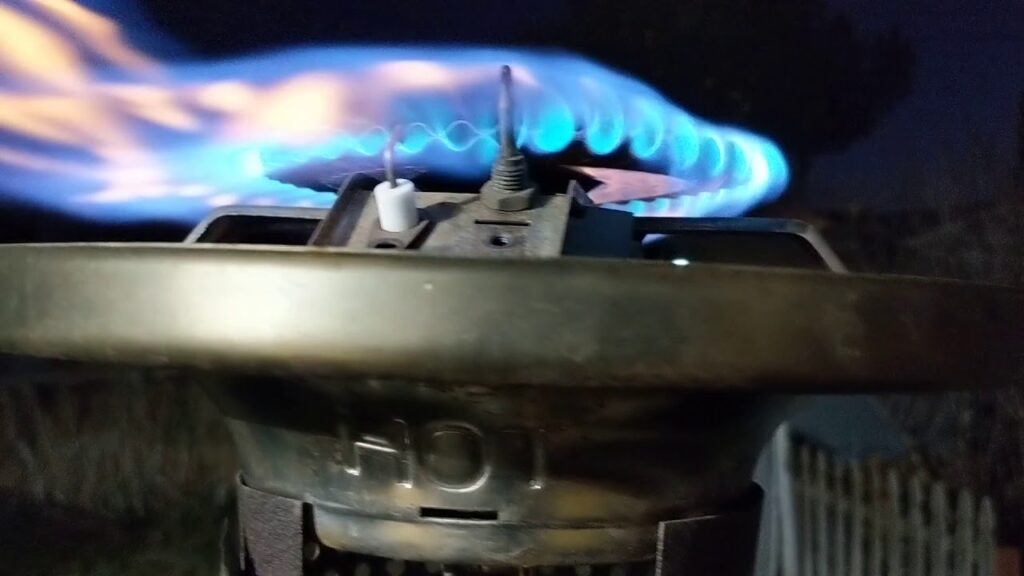
Are you having trouble getting your patio heater to ignite? Before you start to panic and assume the worst, there are a few things you can do to troubleshoot the problem before calling in a professional. Here are some common issues to look for and steps you can take to get your outdoor heating system back up and running.
1. Check for gas flow and pressure: One of the most common reasons a patio heater fails to ignite is that there is an issue with the gas flow or pressure. Make sure that your propane tank is full and that the regulator and cylinder valve are open. If everything seems to be in order, try replacing your current propane tank with a new one to see if that solves the problem.
2. Inspect the pilot tube and light: The pilot tube and light are essential components of your patio heater. If either one is not functioning correctly, it can lead to problems with ignition. Check the pilot light to make sure it’s lit and the pilot tube is clear of any debris or blockages.
3. Clean the burner assembly: A dirty burner assembly can lead to issues with ignition, so it’s important to clean it regularly. Use a pipe cleaner or brush to clear out any debris or blockages in the burner apertures, chamber, and emitter screen.
4. Check for loose connections: Loose connections can prevent your patio heater from igniting. Make sure all connections are tight and secure, including hoses, valves, and electrical wires.
5. Replace faulty components: Certain components of your patio heater, such as the igniter or gas controls, may need to be replaced over time. If you’ve exhausted all other troubleshooting steps, it may be time to call in a professional to diagnose and fix the issue.
In conclusion, if your patio heater is not igniting, don’t panic. There are steps you can take to troubleshoot the problem yourself. Check for gas flow and pressure, inspect the pilot tube and light, clean the burner assembly, check for loose connections, and replace faulty components as needed. With a little bit of effort, your patio heater will be back in working order, and you can start enjoying your outdoor space once again.
Checking the Propane Tank and Gas Pipe for Leaks

If your patio heater is not igniting, one potential issue could be a gas leak. Gas leaks are a serious safety hazard and should be addressed immediately. Here are some steps to take if you suspect a gas leak in your patio heater:
1. Turn off the gas supply: If you suspect a gas leak, the first step is to turn off the gas supply. This will prevent any further gas from escaping.
2. Check the propane tank: The propane tank is the most common source of a gas leak. Inspect the tank for any signs of damage or corrosion. If you notice any cracks or other damage, replace the tank immediately.
3. Use a soapy water solution to test for leaks: To check for a gas leak, mix a solution of soapy water and apply it to the gas cylinder valve, regulator, and gas connections. Turn the gas supply back on and inspect the connections. If bubbles form, there is a gas leak and repairs are necessary.
4. Check the gas pipe: Inspect the gas pipe for any signs of damage or corrosion. Look for cracks or other damage along the length of the pipe. If you find any damage, do not attempt to repair the pipe. Instead, replace the entire length of the gas pipe.
5. Contact a professional: If you are not comfortable inspecting your patio heater for gas leaks or if you have identified a gas leak, contact a professional. A certified technician can safely diagnose and repair any issues with your patio heater.
Prevention is key when it comes to gas leaks. Be sure to regularly inspect your propane tank, gas pipe, and patio heater components for any signs of damage or wear. Performing routine maintenance and repairs can help keep your patio heater functioning safely and effectively.
Conclusion
In conclusion, a patio heater not igniting can be a frustrating issue, but it’s important to address it promptly for safety reasons. Common causes may include a gas leak, loose connections, dirty thermocouples, or issues with the ignition assembly. Regular maintenance and cleaning can prevent some of these problems from occurring. However, if you’re not comfortable inspecting or repairing your patio heater, it’s always best to call a professional. By taking the necessary safety precautions and addressing any issues promptly, you can enjoy your outdoor space in comfort and warmth for many years to come.

